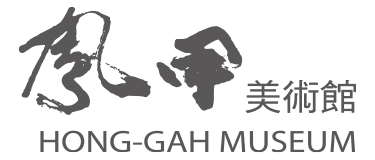BACK
Jean Baudrillard – Photography and Passwords

Jean Baudrillard (1929-2007), a theorist of post-modernity and one of the most important nowadays philosophers, is also a photographer. Baudrillard’s theories on Simulacra and Simulation, Consumer Society, and Symbolic Exchange have been known for a very long time. But, and that is less known, his photos were exhibited all around the world since the 80’s. In prestigious venues such as the International Festival of Photography – Arles, (France), the Center for Art and Media – Karlsruhe (Germany), the Maison Européenne de la Photographie – Paris, the Färgfabriken (Sweden), the Gallery of Modern Art -Brisbane (Australia), the Daelim Museum – Seoul (Korea) etc. and more recently at Lianzhou Festival and Cafa Art Museum – Beijing (PRC).
Although – or because -the photographic act was the extension of his thought, Baudrillard insisted to consider himself as an “amateur”.
The greatest feature of his works was to let the picture speak for itself without referring to any other reality. Baudrillard’s philosophical style inspired the theory of contemporary photography. To Baudrillard, photography could be part of radical thoughts, philosophy, anthropology, etc. Baudrillard’s images demonstrate his keen philosophical vision, full of Zen meditation from the East as well as the critical-thinking from the West.
Through the friendship between Marine Baudrillard, his wife, and Director Lin, Chi- ming from the Department of Arts and Design of the National Taipei University of Education (the translator of Baudrillard’s first book in Chinese and also the curator of this exhibition),we have such rare privilege to have Jean Baudrillard’s photographs in Taiwan for exhibition. This exhibition develops also Baudrillard’s pioneer aspect of the reflection on technology. Through the combination of augmented reality, this exhibition shall be the first exhibition to use wearable devices such as Google Glass in Taiwan.
This exhibition will also present fragments of the documentary film on Baudrillard’s thoughts: Mots de passe.
Seduction of the Light
For Baudrillard, the photography is close to the theme of seduction. Firstly, it is similar to the trompe-l’oeil, presenting a kind of “pure fascination”. Then, the photography is also lack of dimensions. The photography put some details into the light, but his thought reverses this into an art of disappearance (it also puts the un-lighted part into the shadow). That is why he says: “the illusion does not oppose to the reality, it is another one more subtle, which envelops the first sign of its disappearance.” In Baudrillard’s photography, the fascination of the light plays an important part. In the photography, the light puts some details into the light, but also puts the other parts disappearing into the shadow. In his self-portraits exhibited here, rarely seen in the other shows, a strong light makes the most part of the face of the photographer hidden in the shadow.
City and objects
Baudrillard declares that the objects have something to say. When the objects entre into the sphere of signs, they become self-effaced since “the signs are always the effacement of the things”. Therefore the objects describe not only the reality but also its absence, especially the absence of the subject. The absence of the subject is related the joy of Baudrillard felt in taking photos, which he describe as a kind of “objective transport” (transport objectif), which makes us understand how he takes the photos when strolling in the city:“Someone who has never felt this objective transport of the image, in the morning, in a city, in a desert, will never understand the pata-physical delicacy of the world.”
Simulacrum and the Secret codes
Baudrillard has discussed the water-mirror of Narcissus: “it is the mirror of the absence of depth, like superficial abyss, which is seductive and dizzy because everyone is falling into this abyss immediately.” This paradoxical water-mirror is no more a reflecting mirror but an absorbing mirror. The photography is not only where the object disappears but also, by the reversal of object-subject position, the place where the subject disappears. The object paradoxically meets the subject in this double disappearance. In his photography, this double disappearance sometimes is expressed by the simulacrum hiding the real city behind, sometimes by the secret codes in the city, like the graffiti on the wall. Sometimes they meet each other and produce a more ambiguous fascination.
Self-portraits in the Augmented Reality
2014 Self-portraits in the Augmented Reality is a piece that concurs with the concept of photography in Jean Baudrillard’s self portraits. By using pads or smart phones, audience could see Baudrillard’s portraits on the screens when cameras scan over the still images in the venue. In addition, audience could also wear Google Glass to see Baudrillard in the venue by using Bluetooth and E-compass while as. The audience are also given a chance to use Epson Moverio BT100 for 3D images.
The Other in the Mirror
2014 Echoing with the concept of mirror of Baudrillard’s self portraits, The Other in the Mirror will provide a space where the audience see a mirror with a fading Baudrillard’’s image on it.
Date:2014.06.07-2014.07.06

Seduction of the Light
Seduction of the Light
Jean Baudrillard

City and objects
City and objects
Jean Baudrillard

Simulacrum and the Secret codes
Simulacrum and the Secret codes
Jean Baudrillard

Self-portraits in the Augmented Reality
Self-portraits in the Augmented Reality
Graduate Institute of Networking and Multimedia, NTU: Prefessor Hong Yi-ping, Hsieh Cheng-hsin, Hunag hsing-ru, Yang shen-jie, Tsai Zhung-hong, Luo Helin / Lab of Cloud Curation, Department of Arts and Design, NTUE: Professor Lin Chi-ming, Zhu Fu-cheng, Hong Shen-bo

The Other in the Mirror
The Other in the Mirror
Luo Helin, Chen Yi-Chun

